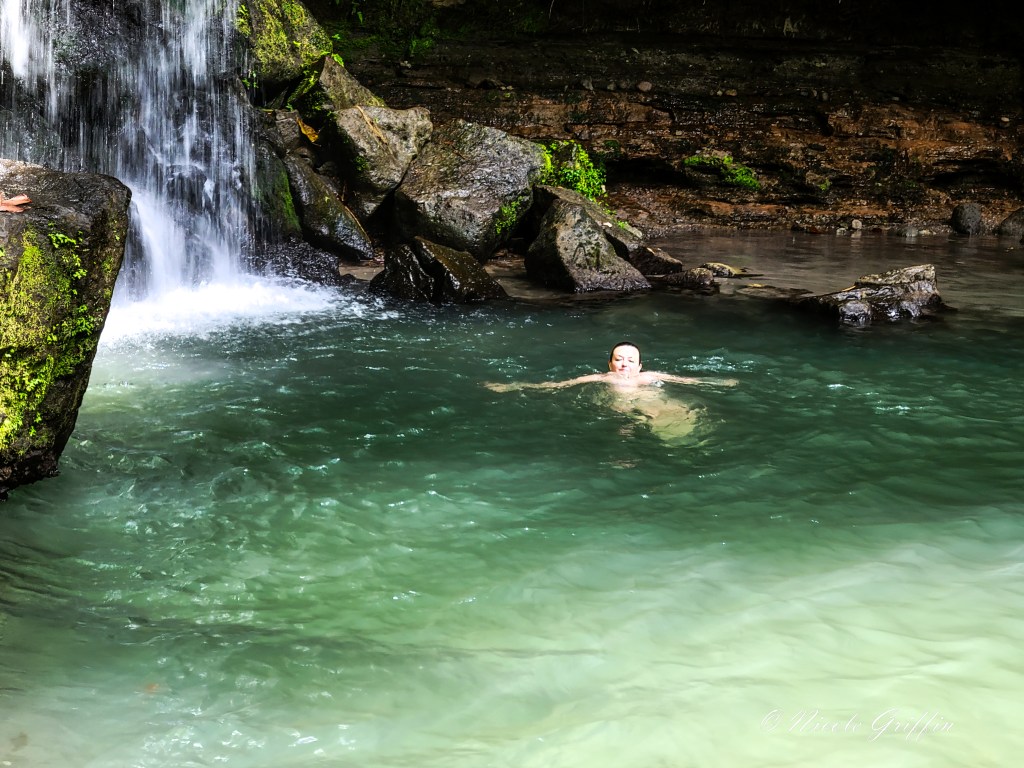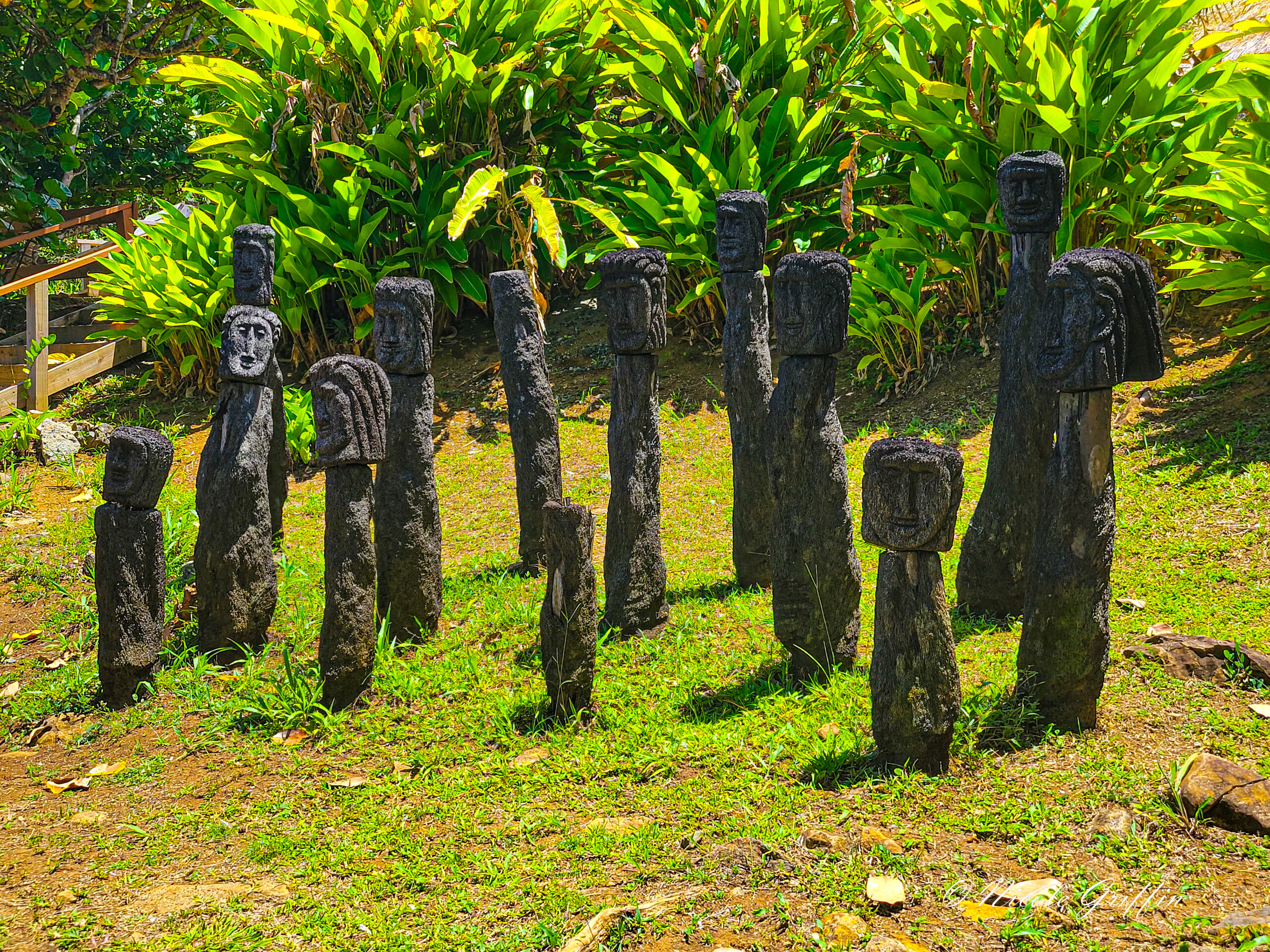Before we left, I had a vague game plan that on the days we ventured away from our immediate environs, one day we would head east, one day we would head south, and one day we would head west.
The main draw in the east was the Kalinago territory, which is the only reservation in the Caribbean for the pre-Columbian indigenous population. When Dominica was first encountered by Europeans on Columbus’ second voyage (on a Sunday, hence the Latin name “Dominica”), the island was populated by the Kalinago (called the Caribs by the Europeans).
a bit about dominican history
The Kalinago on Dominica resisted European colonization for centuries after Columbus, but starting in the 17th century, the island fell alternately under the control of British and French colonizers. During this time most of the Kalinago population was wiped out and, as in most of the Caribbean, replaced by enslaved peoples from Africa brought to work on plantations.
But unlike in the rest of the Caribbean, the Kalinago population was not wiped out entirely. Today the Kalinago comprise over 3 percent of the population—a total only in the thousands, but a significant rebound from its nadir in the hundreds in the early 20th century.
Under the Carib Reserve Act, passed after Dominica’s independence from Britain in 1978, the Kalinago have their own self-governing territory in the east. It was to this territory that we headed on Monday.

onward to kalinago territory
Our travel guides had said that this was the poorest part of the island, and the poverty was immediately apparent from the state of the roads. The roads on the island were generally not in the best condition, but everywhere else, they were at least reliably paved. As soon as we branched off the main road to head towards Kalinago territory, the road turned to gravel. We found stray dogs and chickens roaming freely as we gingerly made our way along the unpaved coastal road.
Kalinago Barane Aute is the main tourist attraction in Kalinago territory. It has a small but well-done museum about Kalinago life and the destruction to it wrought by colonialism. (I found it refreshingly undiplomatic about this.) After that you are free to wander a loop through a model village situated along the craggy cliffs overlooking the Atlantic. The Crayfish River flows through the village and cascades down to the Atlantic at the picturesque Isulukati Falls. In retrospect, I wish I had a guide to show me around the village. I enjoyed the beauty, but didn’t feel that I walked away with as deep an understanding of Kalinago culture as I would have liked.

At the end of the loop are a few shops selling Kalinago crafts. The Kalinago are particularly known for their baskets, which are made of dried reeds, dyed yellow, brown, black, and pink using natural techniques. They also made crafts out of calabash gourds, hollowed, dried, and etched with designs evoking the island.
emerald pool
After Kalinago Barane Aute, we departed the Kalinago territory (roads immediately improved), and continued south and west to the Emerald Pool. It was an easy hike in and down to a small pool (which was not quite emerald, perhaps more of a jade) fed by a waterfall that plunged from the rainforest overhead.

It reminded me of being inside a cenote in the Yucatan, except that the cenote was cut in half. The cliffs above formed a semi-circle around the waterfall, and plants and vines hung down into the chasm. After the pool, the water flowed away from the semi-circle, down the side of a mountain where it presumably joined up with other streams to form a river and eventually meet the sea.
The pool looked small, but it was delightfully cool and deep enough that there were spots I couldn’t touch. I swam up under the waterfall and got pummeled by the water, while braver souls jumped off the rocks behind the waterfall. (I would have been game for this, but the pool wasn’t quite that deep).

Did I mention it was May 1, International Labor Day? Someone had told us the day before that there would be a big party in Marigot, which was about 30 min east of Calibishie and on our way back from our day’s adventures.
party in marigot
Hilariously, the party was KFC-sponsored (we later determined there was one KFC in Roseau, and it appeared to be the only fast-food chain on the island). People were playing beach volleyball and other sports along the shore, while pop music pounded from loudspeakers.
Passing by the KFC, we instead ate at a quiet little beach bar beyond the main festivities called the Last Flight (presumably named after the inoperable plane parked beside it). We had a couple Caribe beers and ordered red snapper (again, good fish, forgettable sides). As the sun set, the sky opened up in a downpour and we ended the day drenched as we walked back to the car.
